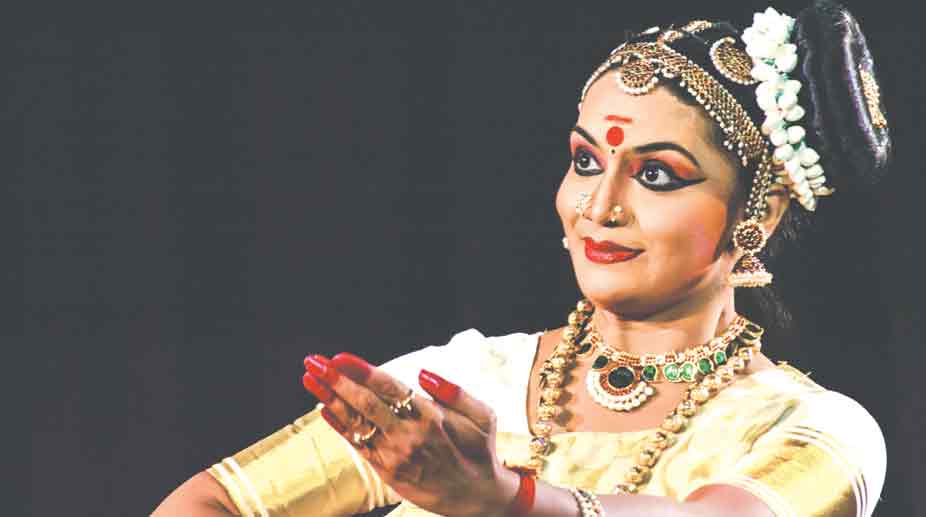Remembering Rukmini Devi
Thanks to Kathak exponent Ashimbandhu Bhattacharya and his team consisting of Avik Chaki and Subroto Pandit, rasikas got a glimpse of their excellent Kathak rendition.
Debadhara Delhi recently presented the 10th Guru Debaprasad Nrutya Parampara in fond memory of the late Guru at the India International Centre.

Rashmi-Menon
Guru Binayak Panda, an exponent and teacher of Odissi dance and founder of Debadhara, the Odissi Dance Academy, upholds the unique style of the late Guru Debaprasad Das, one of the founder Gurus of Odissi, as a classical dance form of India. Among the various music and dance festivals organised by Debadhara, the most awaited is their annual multi- style dance festival that has reached its 10th edition. Debadhara Delhi recently presented the 10th Guru Debaprasad Nrutya Parampara in fond memory of the late Guru at the India International Centre.
The two-day festival that aims to bring different dance forms together on one platform this year comprised Kathak by Gauri Divakar, Pragati Sood and Anju Biswas; Mohiniyattam by Rashmi Menon; Kuchipudi by Anmol Bansal; Bharatanatyam by Dakshina Vaidyanathan Baghel; Chhau by Shagun Bhutani; and, of course, Odissi by Guru Gajendra Panda and disciples, Arushi Mudgal, Aditi Mukhi, Asha Kumari and Lipsa Satpathy.
Aditi Mukhi, a senior disciple of Guru Binayak Panda, presented Kalavati Pallavi with live music conducted by Guru Gajendra Panda on Manjeera with Prashant Behera (Vocal), Prashant Mangaraja (Pakhawaj) and Nikhil Kumar (Flute). The rest of the dancers used recorded music, except for the Kathak and Chhau performers. Arushi Mudgal presented Jhinjhoti Pallavi followed by the Oria song “Prano-sangini re…”, where Krishna comes disguised as the Alta woman, for the Abhinaya piece and gave it a delicate treatment.
Advertisement
Rashmi Menon opened her impressive Mohiniyattam recital with Dashavatara from Jayadeva’s Geeta-Govindam in Raga-malika-Tala-malika and presented a touching Abhinaya piece on a Malayalam poem, where a Gopi begs Krishna although she has no glittering costumes or jewellery to charm him as compared to others. Lord Krishna, pleased with her devotion gives her Darshan. One could see tears shimmering in the dancer’s eyes while she emoted the Sahitya, enhanced with the pathos-filled Swaras of ragas Shivaranjani, Kalyani, Kapi/Pilu and Bharavi.
Kuchipudi dancer Anmol Bansal impressed with her neat technical grasp of the style in the Ganesh-Vandana and Jatiswaram in Vasanta Ragam. Shagun Bhutani with Shubham Acharya offered an altogether different flavour in the masked dance, Saraikela Chhau, with live authentic music conducted by Guru Shashidhara Acharya, depicting the mythological story of Chandrabhaga. Pragati Sood presented Tarana in raga Kalavati and a Bandish in Megh in Jaipur style of Kathak. The inaugural evening opened with Kathak of Lucknow Gharana with Anju Vishwas, providing a different flavour of Kathak.
The second evening opened with an Odissi duet recital by Guru Gajendra Panda and his talented disciple, presenting the Ardhanareeshwara “Chmpeyagaurardha shareerakayai…”, studded with the impressive Shabda-swara patha in between the Sanskrit shlokas depicting the attributes of Shiva and Parvati alternately. Treeni-Trishulam in Bharatanatyam by Dakshina Vaidyanathan Baghel depicted how Devi was given different Astras by different Devas and the Trishula by Shiva that killed Mahishasura. The music by Sudha Raghuraman enhanced the dance choreography that incorporated Ida, Pingala and Sushumna Nadis, awakening the Kundalini Shakti, culminating in raga Charukeshi with “Tanno Devi prachodayat…” being chanted like a Mantra, casting spell.
The excellent Odissi duet by Asha and Lipsa showcased the Nava-Rasa, in the context, with references from the Ramayana. The festival concluded with a scintillating Kathak recital by Gauri Divakar, who presented excerpts from her dance production Hari Ho Meri Gati, choreographed by Aditi Mangaldas. Opening with traditional Thaat, Amad and Tukdas like “Digdig thei ta thei ta thei…” on the live Lehra in raga Shyama Kalyana, the unique presentation was studded with Kavitta, Padhant in a sitting position and the Gat-Nikas, Gat-Bhava and crisp foot-work striking for the unusual use of the Big Toe to carve a neat statement.
Advertisement